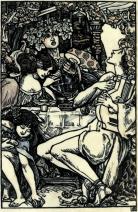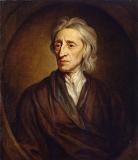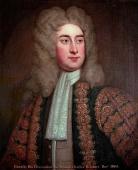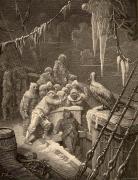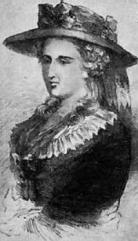Timeline On the Supernatural in Poetry by Julianne Turner
Created by Julianne Turner on Mon, 12/06/2021 - 11:03
Part of Group:
Each of the entires in this timeline either explain the cultural climate that Ann Radcliffe's On the Supernatural was borne of, or provide historical context for the events leading up to said climate.
Timeline
Chronological table
| Date | Event | Created by | Associated Places | |
|---|---|---|---|---|
| circa. 1697 |
John Dryden publishes "Alexander's Feast"A little over a hundred years before the Romantic Period even started, a man named John Dryden published a book called Alexander's Feast. A few decades after the Romantic Period started, On the Supernatural in Poetry was published. In Radcliffe's work she essentially had a conversation with herself wherein she argued that the imagination used by an author had a large amount of influence over the settings of the book. She used Dryden as an example of what an author without imagination in his work is. This idea holds water, as Dryden was known for writing his ideas out as concisely as possible. He translated other works in a similar manner (Corse). However she also used Dryden as an example of an author that had the capacity to infuse his work with details that brought life to his book. She only cited Alexander's Garden as the work he put his imagination into. His one attempt at fleshing out his work with unnecessary details succeeding enough for Radcliffe to use it as a shining example on how important those details are in bringing life to a story. |
Julianne Turner | ||
| 1715 to 1789 |
The EnlightenmentPictured here is John Locke, a philosopher that influenced many including Thomas Jefferson and Immanuel Kant (Uzgalis John Locke). He carried out his work as a great thinker during the Enlightenment, which was a period that focused on the concepts of logic and reason. An age of revolutionary ideas such as the Enlightenment are hard to express in an image, so I thought a picture of one of its best thinkers would suffice. This period lasted for over fifty years before the children born into it tired of it and decided to focus on individualism and creativity rather than essential information. Thus romanticism was born, but not overnight. The Enlightenment laid the groundwork for the next age and the difficulty it would have being considered a legitimate school of thought. |
Julianne Turner | ||
| circa. 1743 to circa. 1744 |
Sir Thomas Hanmer Mistranslates ShakespeareIn 1743 and 1744 a british nobleman named Thomas Hanmer published a book of Shakespeare's works translated froma few previously translated versions. It sold spectacularly well, especially compared to the other versions on the market at the time. However, in this edition Hanmer mistranslated a few of the old english terms, as well as adding some of his own "corrections". This was not disclosed to the buyers, but was infamously discovered(Hubeart Shaking up Shakespeare by T.L. Hubeart Jr..). In Radcliffe's On the Supernatural in Poetry she mentions Hanmer and uses him as an example for her claim that the small details provided by the original author of a work do matter, thus backing her argument around the construction of a scene in a gothic novel. |
Julianne Turner | ||
| 1798 |
The Romantic EraAccording to most scholars, the Romantic Period in England began when Samuel Taylor Coleridge and William Wordsworth published Lyrical Ballads in 1798. The image I chose to represent this era is an illustration that was drawn up for a later version of “Rime of the Ancient Mariner”, which was one of the works that was first published in Lyrical Ballads. It was a movement that effected literature when it caused people to think about how things were better before the Industrial Revolution began in 1760 (Adam Zeidan The First Industrial Revolution). Nature was being negatively impacted by the encroaching landscape of factories, and people were sick of it. The focus on this and on the past resulted in a complete rewrite of what was acceptable in published literature of the time. The gothic genre was invented. Run-on sentences, sentence fragments, and pathetic fallacy were more commonly accepted as stylistic choices rather than illogical acts. Ann Radcliffe used these practices in her own work, including On the Supernatural. |
Julianne Turner | ||
| 1826 |
"On the Supernatural in Poetry" is publishedThe author of On the Supernatural in Poetry, Ann Radcliffe, died in 1823, and her husband published her work post-humously in 1826. In it she uses the upper class' favorite literary structure, dialogue, to argue the legitimacy of the gothic genre. She used logic, another favored tool of the privileged, to explain that it made perfect sense for the terror and horror-filled stories circulating among the lower classes to trigger the Sublime. She made multiple points, as the dialogue format allowed her to provide herself with counterpoints to respond to. She is credited with accruing respect for the gothic genre through her works (Ann Radcliffe). |
Julianne Turner |

